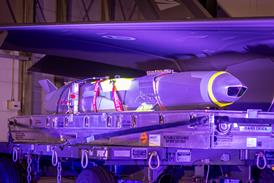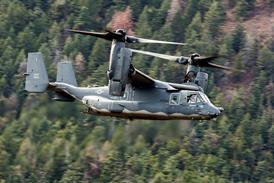Pilots at Eglin AFB, Florida, are demonstrating their continued progress in maturing the Lockheed Martin F-35 Joint Strike Fighter's training pipeline.
US Marine Corps Maj Joseph Bachmann, a test pilot assigned to VMFAT-501, flew Eglin's 200th sortie with the type on 24 August. Bachmann was instructing one the unit's transitioning pilots, USMC Maj Mike Rountree; a highly experienced weapons school instructor. Rountree is converting to the short take-off and vertical landing F-35B from the Boeing AV-8B Harrier II.
 |
|---|
US Air Force |
"The aircraft have matured dramatically since the early days," Bachmann says. "What we're seeing is just leaps and bounds of maturity here with the airplanes we have."
The aircraft are predictable and seem to be maintainable, "which is good for the sortie production rate," he adds. Rountree says that the 33rd Fighter Wing's maintainers have been gaining experience and learning how the F-35's systems behave, which has helped the unit increase its sortie generation rate.
Right now, the base has started to fly with enhanced Block 1B aircraft - a standard which adds mostly improved software but also some hardware modifications. Block 1B aircraft are much more stable and predictable than Block 1A aircraft, Rountree says.
The next step for instructor pilots at Eglin is to validate the courseware for the Block 1B software, Rountree says. That is necessary in order to train Marine aviators who will stand up the service's first operational F-35B unit in Yuma, Arizona, later this year.
Currently, the flight envelope for the F-35 is "very, very restricted," Bachmann says, but there are signs of improvement. Initial impressions are that "it flies a lot like a combination of the [Boeing] F/A-18 and the [Lockheed] F-16," says Bachmann, who was previously a test pilot at NAS Patuxent River, Maryland.
The F-35 no longer requires a chase aircraft, Rountree says. "We no longer have a requirement to be chased by a dissimilar aircraft," he says. Instead, F-35s now operate as a normal two-ship element.
Additionally, pilots are readying themselves to start aerial refueling operations with the F-35 "in the next couple of weeks," Bachmann says.
Source: Flight International























